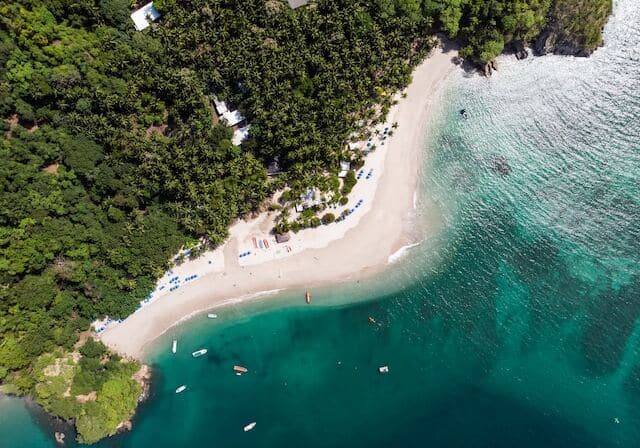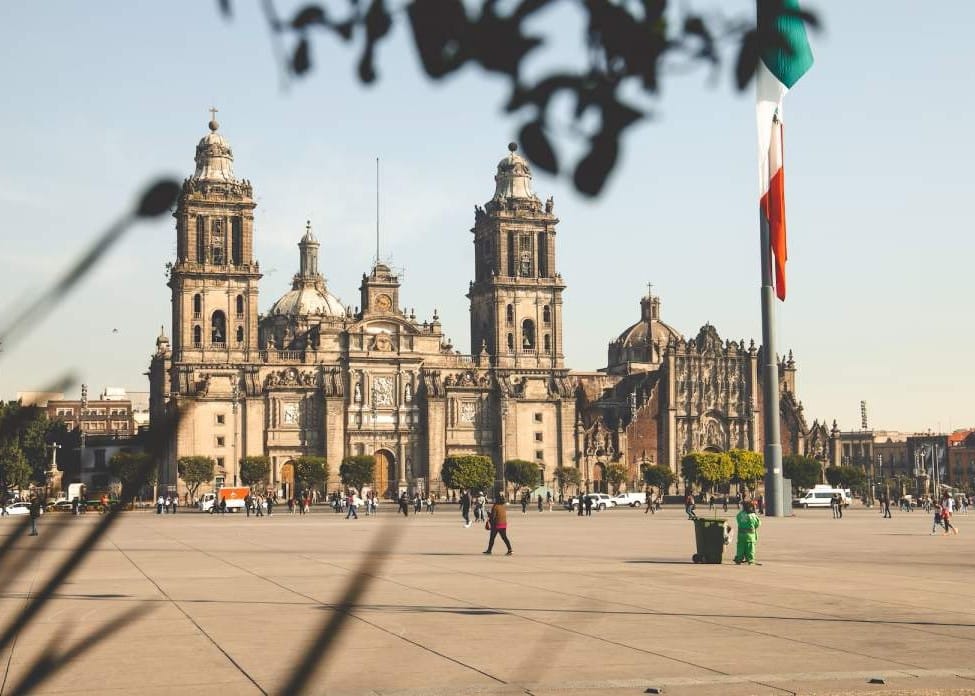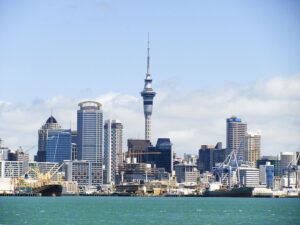Retirees across the United States are discovering inventive and unique ways to enjoy retirement on their own terms. This has led to an exodus of senior US expats moving abroad to foreign countries for a better quality of life through a lower cost of living, better weather, and access to a high-quality healthcare system.
Using data from our Global Intelligence Unit’s latest report on US retirement trends, we’ll explore the best retirement destinations for your lifestyle choices and how you can make them a reality.
Why Americans choose to retire abroad?

Many American retirees prefer countries where their pensions can cover more expenses, taxes are lower, and the political situation is stable and predictable.
These internal motivations are often combined with external desires such as pleasant weather and the enriching experience of immersing oneself in new cultures and being part of local communities.
Moreover, some retirees are motivated by the prospect of acquiring a second citizenship, which provides practical benefits like easier travel and access to social services in other countries. This trend aligns with the increasing global mobility and globalization of retirement lifestyles.
As retirees seek more adventure in their post-working years, choosing a retirement destination has become an opportunity to enhance personal and financial satisfaction, reshaping the traditional concept of retirement.
“In any case, recently, particularly following the latest elections and the global pandemic, there has been a noticeable increase in the number of Americans exploring options for relocation or acquiring a second citizenship. This trend reflects a growing interest in finding alternative living arrangements that offer better quality of life, economic benefits, and a sense of security and acceptance,” the report states.
How the Global Intelligence Unit scores each country
The Global Citizen Solutions retirement index for US retirees consists of seven target-oriented indicators grouped into three thematic sub-indices: Quality of Life, Security and Integration, and Economics.
Data for these indicators is collected from reliable secondary sources, such as Numbeo for cost of living, rent prices, climate, and healthcare system ratings, and other databases for indicators like the Global Peace Index (GPI), Migrants Acceptance Index, and English Proficiency Index.
Tax optimization scores take into account countries’ agreements to avoid double taxation, special tax regimes for expatriates, and non-taxation of foreign-earned income. In addition, flight availability and distance are assessed based on factors like flight duration and the availability of direct flights, ensuring accessibility for US expatriates.
Creating normalized indices involves finding the minimum and maximum values to establish a targeted performance index. Each data point is normalized using the Min-Max Normalization formula to ensure comparability.
We assign weights to each indicator based on their relevance and impact on the decision-making process of US retirees. These weights are determined from publicly available data, research on retirees’ preferences, and expert opinions.
If data is missing, we use a method that averages regional data and assigns weight based on proximity to provide enriched context for filling in the gaps, maintaining regional and local accuracy. To calculate the final index for each country, we multiply the normalized value of each indicator by its assigned weight and then sum these products to get composite scores that represent the overall suitability of each country for US retirees.
Taking all these factors into consideration, here are the 10 best places for Americans to retire abroad.
10 best places for Americans to retire abroad
1. Spain

Spain’s overall crime rate is one of the lowest in Europe, particularly concerning violent crimes.
In 2023, Spain was the 8th safest nation in Europe for violent crime. While violent crime is uncommon, petty crimes like pickpocketing and theft, especially in tourist areas and large cities like Barcelona and Madrid, are more prevalent.
The cost of living index is an important tool for comparing the prices of consumer goods and services across different locations. It covers categories such as groceries, dining out, transportation, utilities, and rent, providing insights into the affordability of essential items.
Madrid, the capital of Spain, offers a unique combination of cultural richness, historical heritage, and modern amenities, making it an attractive destination for residents and expatriates.
Housing is a significant part of living expenses in Madrid. The average monthly rent for a one-bed apartment in the city is approximately $1,322.50; in less central areas, it’s around $968.05.
Larger families looking for three-bedroom apartments would find options in the city, averaging $2,321.49 monthly and $1,655.28 in the suburbs. The purchase price per square foot reflects a similar urban-rural divide, costing about $446.54 in the city and $258.77 on the outskirts.
Retirement options
If you want to retire in Spain, Spain’s GV program is an excellent option. The program invites non-EU citizens to apply for the program and obtain residency permits in a short timeframe in exchange for a qualifying investment.
The most common way to get a Golden Visa is to make a Spanish real estate investment of at least €500,000. This will secure you a second home along with a Spanish residency permit. It includes the option of buying a multi-unit property, in which you can rent out the additional units to boost your monthly income or to pay off your initial investment.
US Social Security is another way to gain residency in Spain through the Spain Non-lucrative Visa, which necessitates a minimum monthly income of just over €2,400. You can then apply for permanent residency after five years and Spanish citizenship after ten years (providing you meet certain conditions).
2. Portugal
Neighboring Spain, Portugal ranked second among destinations chosen by US retirees. Aside from the excellent all-year weather, this country on the Iberian coast has several other reasons for being a great choice.
In Portugal, expatriates can choose between public healthcare through the Serviço Nacional de Saúde (SNS) or private healthcare services.
Those contributing to the Portuguese social security system can access public healthcare, which is known for its high standards. However, wait times and service availability may vary by region.
On the other hand, private health insurance in Portugal offers faster access to a wider range of healthcare facilities and specialists.
This option is especially attractive due to generally shorter waiting times and the availability of English-speaking medical professionals, particularly in areas with significant international communities.
Private healthcare facilities, mainly located in major cities like Lisbon and Porto, provide a wide range of medical services with modern infrastructure.
Portugal is widely regarded as one of the safest countries globally. Its impressive ranking as the 7th safest country in the world and 5th in Europe attracts many US expats seeking a more stable and secure living environment due to growing concerns about safety in the United States.
The nation’s low crime rates and effective law enforcement contrast with the increasing safety worries experienced by many expats in their home country.
There is a significant difference in the overall cost of living and rent between New York and Lisbon. To maintain a lifestyle in New York that costs $4,451.4 in Lisbon, one would need approximately $10,243.5. Consumer prices in New York are 98.9% higher than in Lisbon without rent, and including rent, they soar to 130.1% higher.
This substantial difference highlights the significant price disparities between New York and Lisbon. The difference extends significantly to the housing sector, with New York’s rent prices being 179.1% higher than Lisbon’s. You would pay $4,109.07 in New York for a one-bedroom apartment compared to $1,441.13 in Lisbon.
Retirement options
Thanks to Portugal’s attractive Golden Visa Program, American retirees can become legal residents of Portugal by investing in the Portuguese economy. The program starts with a minimum investment of €250,000, and potential applicants can choose investment options such as contributing to an investment fund or donating to the reconstruction of national heritage in Portugal.
Another way Americans can retire in Portugal is through Portugal’s D7 Visa. The D7 Visa is a retirement visa that allows foreign citizens with a monthly pension or passive monthly income to retire and live in Portugal.
3. Costa Rica

Daytime temperatures typically range from 21-26°C, while cooler nights offer a refreshing contrast. This region’s moderate climate, along with its accessibility to amenities, makes it a preferred choice for many expats.
In contrast, Costa Rica’s coastal regions have stunning beaches but come with higher temperatures and humidity, presenting a significant shift for those accustomed to more temperate climates.
Healthcare in Costa Rica is a notable draw for retirees, thanks to its high global rankings. The country’s healthcare system is ranked 30th out of 167 countries by Statista and 36th by the World Health Organization, surpassing the United States in both rankings.
Costa Rica offers universal healthcare through the CAJA system, which covers all medical needs for citizens and permanent residents.
This system, funded by modest income-based contributions, ensures comprehensive care. For those seeking quicker access and more personalized care, private healthcare remains an affordable option compared to US standards. Many expats benefit from a mix of public and private healthcare to optimize their medical care.
Safety is another appealing aspect of Costa Rica for retirees. The country ranks 39th on the 2023 GPI, significantly higher than the United States, which ranks 131st. This high ranking reflects Costa Rica’s commitment to safety, further underscored by the US State Department’s Level Two travel advisory, comparable to advisories for European countries like Spain and France.
The cost of living in Costa Rica is another significant advantage. San José is considerably more affordable than New York City, with consumer prices being 45.5% lower and rent prices up to 83.6% cheaper. This economic disparity makes Costa Rica an attractive option for retirees seeking a comfortable yet affordable lifestyle.
4. Uruguay

The country transitions to cooler temperatures from March to May, with increased rainfall, particularly in April and May. Winters are mild, with temperatures ranging from 6°C to 14°C. Spring brings a mix of sunny days and occasional rains, with temperatures gradually climbing from 9°C to 22°C.
The healthcare system in Uruguay combines public and private sectors, ensuring comprehensive coverage. The public system, funded by taxes, provides free or low-cost services, but may have longer wait times. The private sector offers faster and higher-quality services at a cost.
The “mutualista” system, similar to a health maintenance organization, allows members to pay a monthly fee for comprehensive services. This system is popular among expatriate retirees, providing a balance between cost and quality of care at a monthly fee ranging from $100 to $200.
Uruguay is considered the safest country in Southern America and ranks 50th globally on the 2023 GPI. The US State Department advises travelers to exercise increased caution, primarily due to petty crimes such as pickpocketing.
The cost of living in Uruguay is lower than in major US cities. For instance, consumer prices in Montevideo are 79.6% lower than in New York, and rent prices are 578.1% lower. This affordability makes Uruguay an attractive option for retirees looking for a comfortable yet economical lifestyle.
5. Mexico

Southern regions, such as the Yucatán Peninsula, have a tropical climate with average temperatures around 28°C and significant rainfall from May to October. Coastal regions also have warm climates with distinct wet and dry seasons.
Mexico’s healthcare system is of high standard, especially in urban centers. The system is tiered, with public healthcare provided through the Mexican Social Security Institute (MSSI) for employees, voluntary MSSI enrollment for others, and private insurance for more exclusive services.
Costs vary, with comprehensive health insurance for expats ranging around $5,900 annually for Americans, $3,000 for Canadians, and $2,750 for Europeans.
Mexico ranks 133rd out of 168 countries in the GPI, indicating a varied security landscape. Although some regions have significant crime risks, areas where expats typically reside are generally safer.
The US Department of State provides detailed travel advisories, recommending normal precautions in states like Yucatán and Campeche, and increased caution in other areas due to crime.
Mexico is highly regarded for its local friendliness, topping the 2023 Expat Insider Report for local friendliness and expatriate welcome. However, its 94th rank in Gallup’s Migrant Acceptance Index suggests a broader divergence in attitudes towards migrants.
The cost of living in Mexico City is lower than in New York City, with consumer prices 51.6% lower and rent 73.8% less expensive. Dining and groceries are also more affordable. However, local purchasing power is lower in Mexico City compared to New York.
6. New Zealand

The Central North Island, including Wellington, experiences moderate temperatures and higher winds. The South Island’s regions, such as Central Otago, have colder winters with potential snowfall, while coastal areas like Nelson are sunnier.
Average temperatures vary by season: Summer (Dec-Feb) sees 20-25°C, autumn (Mar-May) has 17-21°C, winter (Jun-Aug) experiences 12-16°C, and spring (Sep-Nov) enjoys 16-19°C.
New Zealand’s healthcare system provides universal coverage, largely funded by the government. Public healthcare ensures free or low-cost services, including hospital and specialist care via GP referrals.
Private insurance offers quicker access to specialists and private facilities. The Accident Compensation Corporation (ACC) covers injuries for everyone, regardless of their status. Expats often find private health insurance beneficial for specialized needs or quicker access, with monthly costs ranging from approximately $26 to $130.
New Zealand is one of the safest nations globally, ranking fourth on the GPI. The country’s low rates of violent crime and terrorism, coupled with minimal petty crime, reflect robust law enforcement and community involvement. It is rated Level 1 by the US Department of State, highlighting its secure environment.
The cost of living in Auckland compared to New York City is lower. Consumer prices in New York are 44.3% higher, and rent prices are 87% higher than in Auckland. Specific expenses, such as dining and groceries, also highlight Auckland’s affordability.
7. Italy

Central Italy has milder winters, with temperatures between 5-15°C, and hot summers exceeding 30°C. In southern Italy, the winters are mild, around 10-15°C, and the summers are hot, often above 30°C, making it an ideal location for seaside activities.
Italy’s healthcare system, the Servizio Sanitario Nazionale (SSN), provides comprehensive care funded by income tax and government support. While public healthcare is extensive, many individuals choose to obtain additional private insurance for faster access to healthcare and wider coverage.
Non-EU expats need legal residency to access SSN and initially require private insurance, with annual premiums ranging from $120 to over $350.
According to the Global Peace Index, Italy is ranked 31st, indicating a high level of safety. The US State Department advises Level 2 travel, suggesting increased caution due to concerns about terrorism and petty crimes in tourist areas.
Italy is ranked 43rd out of 138 countries in the Gallup Migrant Acceptance Index, indicating a moderate acceptance level towards migrants. Expats often find a welcoming environment, particularly in cosmopolitan regions, though experiences can vary based on location and societal integration efforts.
The cost of living in Rome and Milan is significantly lower than in New York City. Consumer prices in Rome are 43.5% lower without rent and 57.3% lower with rent included. In Milan, rent and dining out costs are considerably cheaper. For instance, the average monthly rent for a city apartment is approximately $1,140.44 in Rome and around $1,529.76 in Milan, both much lower than New York’s average of $4,189.81.
Retirement options
Launched in 2017 by the Italian government to encourage foreign direct investment, the Italy Golden Visa, also called the ‘Investor Visa for Italy,’ allows third-country nationals (non-EU/EEA and non-Swiss) to obtain a residence permit in exchange for an investment in the country’s economy.
Italy’s Golden Visa also provides you with access to a special tax incentive that allows golden visa holders to pay reduced income tax after becoming an Italian tax resident. The minimum investment amount is €250,000 in government bonds, corporate shares, innovative startups, or philanthropic donations, and the investor residence permit is valid for two years, which can be renewed for three more years. It can also be renewed continuously if the investment is upheld.
8. Canada

Precipitation averages around 1,190 mm annually, with the wettest months being November to March. Alberta has a continental climate characterized by cold winters and warmer summers.
Canada’s public healthcare system, accessible to permanent residents, varies between provinces and territories. Initially, expats and non-residents may need private health insurance until they qualify for public healthcare. Annual premiums for private insurance range from $4,000 to $6,000, depending on coverage and individual circumstances.
Canada ranks 11th on the Global Peace Index, reflecting its safety and security. The US Department of State rates it at Level 1, indicating minimal safety risks.
Canada welcomes immigrants, having admitted over 437,000 new permanent residents in a year, reflecting its inclusive policies. It also ranks high in global polls on migrant acceptance, with a proactive approach to immigration addressing labor shortages and demographic challenges.
Living costs in Toronto are significantly lower than in New York City. Consumer prices in New York are 45.5% higher than in Toronto, and rental costs in New York are more than double. In Vancouver, the cost of living comparison shows New York to be 36.8% more expensive, with rent prices in New York 92.2% higher.
9. Ireland

The healthcare system in Ireland is two-tiered, providing both public and private options. Public healthcare, managed by the Health Service Executive (HSE), is available to residents, including expats staying for over a year.
Many people choose private insurance to avoid long wait times, and expatriates often benefit from international health insurance for broader coverage.
Ireland ranks highly for safety, holding the third position on the Global Peace Index. The US Department of State classifies Ireland at Level 1, indicating minimal travel risks. The country is also welcoming to migrants, ranking 10th on the Gallup Migrant Acceptance Index, reflecting a positive attitude towards expatriates, bolstered by high safety standards.
Living costs in Dublin are lower than in New York. Consumer prices in New York are over 40% higher, and rent is nearly 58% more expensive. A one-bed apartment in central New York costs around $4,189.81, significantly more than in Dublin. Eating out and grocery shopping are also pricier in New York, making Dublin a more affordable option for expats.
For US retirees in Ireland, taxation depends on residency status and income sources. Generally, tax residents are taxed on worldwide income, but the US-Ireland tax treaty helps prevent double taxation.
10. France

France has a diverse climate. In Paris, winters are cool with temperatures around 4.5°C in January, and summers are warm at 20.5°C in July. Eastern regions like Strasbourg have colder winters with possible snow and warm summers. In the south, including Bordeaux, winters are mild around 7°C, and summers are hot at 22°C.
In terms of safety, France ranks 67th on the Global Peace Index and the US State Department advises Level 2 caution due to potential civil unrest and terrorism.
Migrant acceptance in France is complex, ranking 46th globally. Language barriers are a common challenge for migrants, but English proficiency has improved, especially in Paris, which is now ranked 43rd globally for English skills.
Living costs in Paris are lower than in New York. Consumer prices are 34% lower, and rent is 142.7% cheaper in Paris. For example, a city-center apartment in Paris costs around $1,501.76 per month compared to $4,189.81 in New York.
France taxes residents on global income, including pensions. The US-France tax treaty helps prevent double taxation, making it essential for retirees to understand their tax obligations.

How Can Global Citizen Solutions Help You?
Global Citizen Solutions is a boutique migration consultancy firm with years of experience delivering bespoke residence and citizenship by investment solutions for international families. With offices worldwide and an experienced, hands-on team, we have helped hundreds of clients worldwide acquire citizenship, residence visas, or homes while diversifying their portfolios with robust investments.
We guide you from start to finish, taking you beyond your citizenship or residency by investment application.
Frequently Asked Questions About the Best Retirement Nations for Americans
What study looked into the top countries to retire to as an American?
International Living conducted a study in January 2023, collecting surveys from American expats all over the world. Results, measured by the categories elected, came up with a shortlist of the top countries to retire to as an American.
How can I retire in Europe?
Both Spain and Portugal offer popular Golden Visas schemes where you can get European residency in a few short months, provided that you make a qualifying investment first. For example, you can buy a home in Spain for €500,000 and gain a Spanish residence permit.
In Portugal, investment options start from €250,000. After five years, you can apply for permanent residency or qualify for a Portuguese passport.
What’s the best country for US expats to retire to?
According to various studies, including International Living, Portugal is ranked as one of the best for US expats to retire to. Its friendly population, welcoming community of American expats, excellent weather, quality healthcare system, and affordable cost of living are all big draws for American retirees.
You can move to Portugal for retirement by investing at least €250,000 in the country through its GV program or by applying for the D7 Visa program through a monthly income earned from Social Security.
What’s the best place for us expats to retire in Central America?
The best location for US expats to retire in Central America is Costa Rica due to its warm climate, good safety records, quality private insurance, and renowned retirement visa program providing significant discounts for retirees.
What’s the best place for US expats to retire in Southeast Asia?
In Southeast Asia, the best location for US expats to retire is Thailand due to its thriving expat community, warm weather, affordable cost of living, and access to a quality healthcare system.
What’s the best place for US expats to retire in South America?
The best nation for US expats to retire in Latin America is Ecuador. The higher altitude of cities like Cuenca provides a warm climate without the extreme heat. Ecuador is also considered one of the best countries to retire abroad for Americans, as pensioners can access discounted flights to the US through the country’s retirement visa program.
What are some other best countries for us expats to retire in?
Some of the best countries for US expats to live and retire abroad include countries like Cyprus and Malta, and Caribbean countries like Dominica, St Kitts and Nevis, and Grenada. Cyprus and Malta both offer permanent residency through renewable permanent residence permits in exchange for investment. Caribbean countries like Dominica, and St Kitts and Nevis have citizenship by investment programs, granting citizenship to US expats who invest a minimum sum in their economy.
Where is the cheapest place to retire?
The cheapest place for US expats to retire to is Colombia due to its low requirement of just $774 in monthly income to qualify for a retirement visa. Other countries like Thailand have low housing costs with monthly rent under $400.
Where is the safest place to retire?
The safest place for US expats to retire to is Iceland due to its low crime rate and small-town feel, as well as unparalleled equality and good relations with other countries.
Can a US citizen retire abroad?
US citizens can retire abroad, and many choose to do so for various reasons, such as lower living expenses, favorable climates, or a desire for new cultural experiences. Retiring abroad, however, involves taxes, healthcare, and legal requirement considerations.
Americans are required to file taxes with the Internal Revenue Service (IRS) regardless of where they live. Challenges may arise when accessing healthcare, particularly in nations where English isn’t prevalent, or the healthcare system differs significantly from that of the United States.
Nonetheless, with careful planning and thorough research, many US retirees find rewarding experiences abroad. Several countries extend concessions and streamline immigration processes, facilitating seamless assimilation for US retirees and ensuring a stress-free migration experience.
What are the downsides of retiring abroad?
Retiring abroad offers many privileges for Americans who take the plunge; however, it can come with potential downsides, including:
- Challenges of adapting to a new culture and lifestyle, which can be particularly daunting for those unaccustomed to significant changes.
- Healthcare disparities as access and quality can vary, and navigating foreign healthcare systems may prove complex.
- Being far from family and friends, leading to feelings of isolation and homesickness.
- Legal complexities, such as residency requirements, unfamiliar legal systems, and remittance of pension income.
What is the best country for retirees?
The Netherlands is often considered the best nation to retire due to its ranking as having the best retirement system, according to the Mercer CFA Institute Global Pension Index 2023. The Dutch social security system provides financial support, and the pension system is well-established, offering financial stability for retirees.
Additionally, the Netherlands is known for its bike-friendly cities, well-maintained public spaces, and a strong sense of community, enabling a healthy and active lifestyle for retirees.
Where do the happiest American retirees live?
The “happiest” place for American retirees can be subjective, as individual preferences vary when retiring abroad. Various surveys and studies, such as the Mercer CFA Institute Global Pension Index and the US News and World Report, have highlighted countries that consistently rank high regarding happiness and well-being for retirees.
The most popular retirement destinations for happiness include Portugal, the Netherlands, Spain, New Zealand, and Costa Rica.
What are the best retirement places for singles?
Countries with vibrant cultural scenes and diverse social activities often appeal to single retirees. Cities like Lisbon in Portugal offer a history, affordable living, and a mild climate with abundant rich cultural experiences and social activities for seniors. Thailand is another popular destination for many retirees with its low cost of living, pristine beaches, expat-friendly atmosphere, and cultural attractions. Costa Rica is recognized for its pleasant climate, good infrastructure, and numerous beach villages with large American retiree communities.
How do you decide which country to live in?
Many expats living in countries like Canada and Japan prioritize quality of life, while others prefer to retire in the cheapest and safest countries, such as Hungary, Romania, Chile, and Mongolia. Some retirees prioritize affordable healthcare when choosing a place to live.
What are the best countries for Americans to retire abroad?
The top ten countries to retire abroad for Americans are:
- Spain
- Portugal
- Costa Rica
- Uruguay
- Mexico
- New Zealand
- Italy
- Canada
- Ireland
- France




